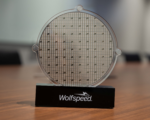Intel’s Manufacturing Expertise Contrasts with Qualcomm’s Design-Only Model
Qualcomm’s Potential Intel Acquisition: Implications and Challenges
Qualcomm’s consideration of acquiring Intel marks a significant move in the semiconductor industry, potentially accelerating its diversification strategy. Analysts highlight that while such a deal could provide Qualcomm with access to advanced manufacturing capabilities, it could also burden the company with Intel’s underperforming semiconductor manufacturing unit. This division has faced substantial losses, raising concerns about Qualcomm’s ability to effectively manage or divest it. The acquisition could divert Qualcomm’s focus from its core strengths in smartphone chip design, possibly impacting its competitive edge in the rapidly evolving tech landscape.
Antitrust Scrutiny Ahead
A potential merger between Qualcomm and Intel is likely to encounter intense scrutiny from antitrust regulators worldwide. The combination of two major chip firms would create a colossal entity with significant influence over critical markets, including smartphones, personal computers, and server infrastructure. Regulators may be particularly concerned about the implications for competition in these sectors, given that both companies play pivotal roles in chip supply. Any attempt to unite their operations could raise red flags about market monopolization, leading to a protracted regulatory review process that could delay or even derail the acquisition.
Market Reactions
The news of Qualcomm’s interest in acquiring Intel has already had an impact on the stock market. Following reports of the early-stage approach, Intel’s shares saw a nearly three percent increase, reflecting investor optimism about the potential deal. Conversely, Qualcomm’s shares dipped by 1.8 percent, suggesting some apprehension among investors regarding the challenges and risks associated with such a substantial acquisition. Market reactions underscore the uncertainty that often accompanies mergers of this magnitude, particularly in an industry as competitive and fast-paced as semiconductors.

Strategic Diversification vs. Core Competencies
For Qualcomm, the acquisition of Intel represents a significant strategic diversification effort. By integrating Intel’s manufacturing capabilities, Qualcomm could potentially expand its product offerings and reduce reliance on third-party foundries. However, analysts caution that the acquisition may distract Qualcomm from its primary focus on smartphone chip design, an area where it has established strong leadership. Balancing the integration of Intel’s operations while maintaining momentum in its core business could prove to be a complex challenge for Qualcomm’s management.
Challenges of Turnaround
If the acquisition proceeds, Qualcomm may face the daunting task of turning around Intel’s semiconductor manufacturing unit, which has struggled to remain competitive against rivals such as TSMC and Samsung. The need for significant investment to modernize and optimize the manufacturing processes could strain Qualcomm’s resources and divert attention from other critical initiatives. Furthermore, if Qualcomm struggles to revitalize this segment, it may have to consider divesting the unit, potentially at a loss, which could further complicate the acquisition’s overall success.
Long-Term Implications for the Industry
The potential Qualcomm-Intel merger could have far-reaching implications for the semiconductor industry. A successful integration of the two companies might redefine the competitive landscape, enabling Qualcomm to compete more effectively against industry giants. However, the deal’s complexity, particularly concerning antitrust regulations and operational integration, could create uncertainty for both companies and the broader market. As the industry continues to evolve, stakeholders will be closely monitoring developments in this potential acquisition and its implications for innovation and competition in the semiconductor space.















